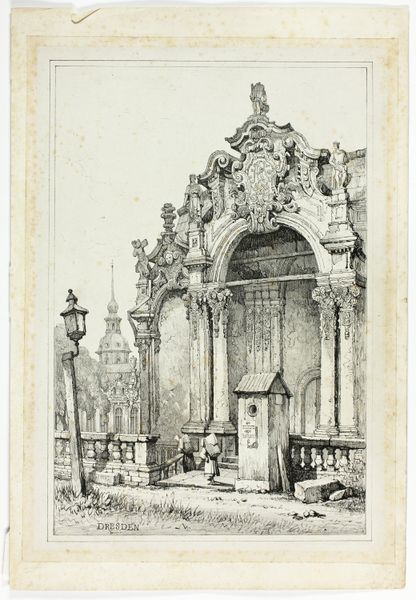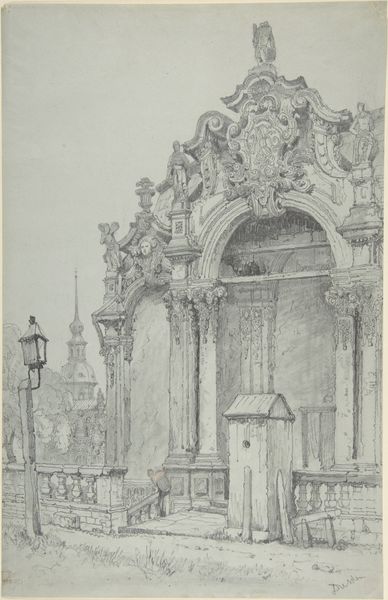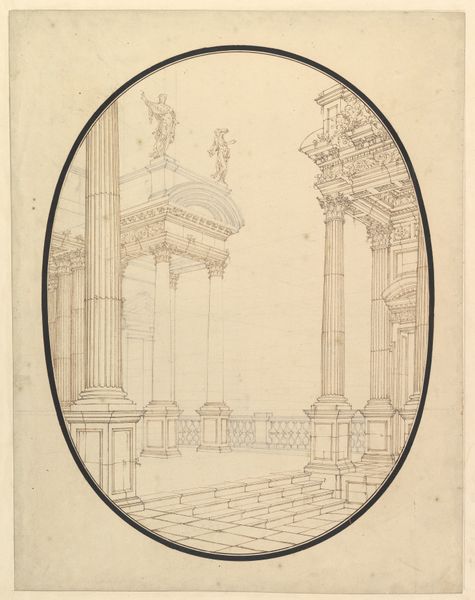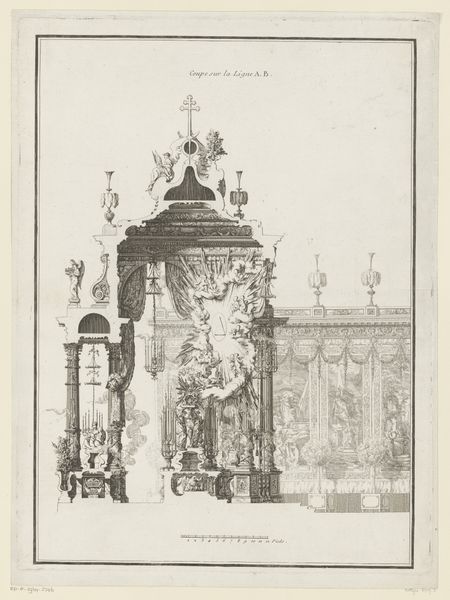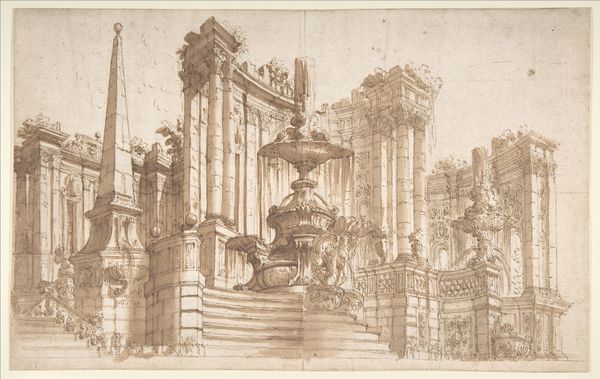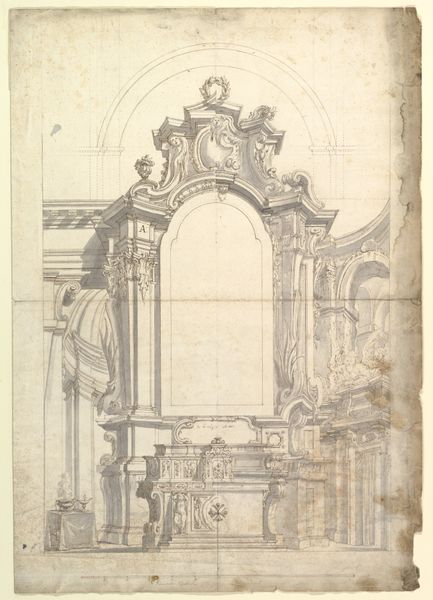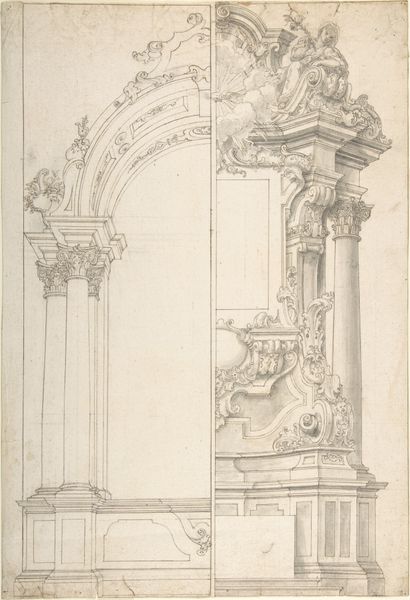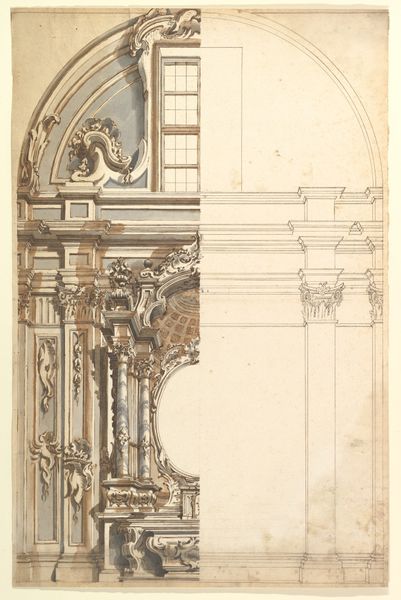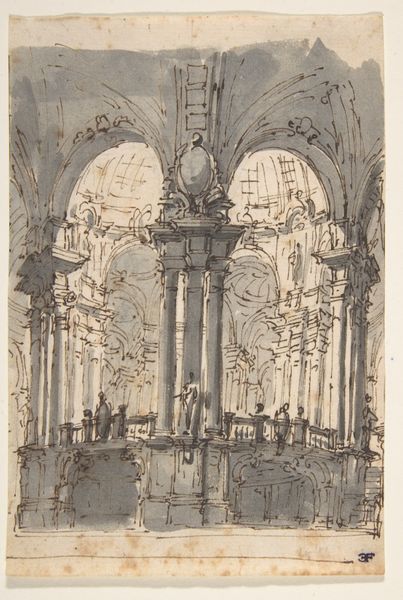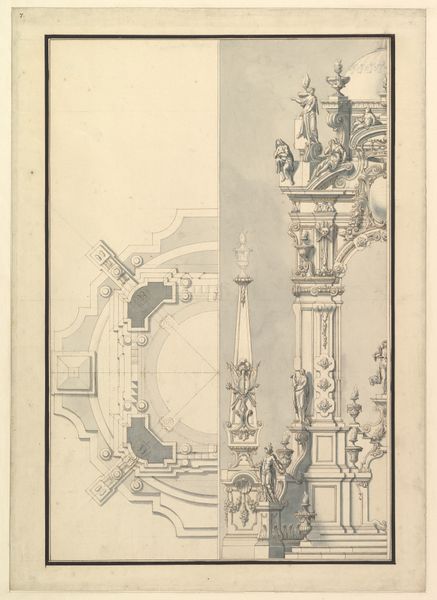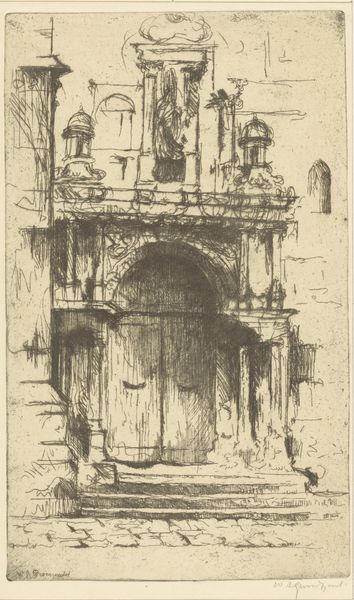
drawing, lithograph, print, paper, architecture
#
drawing
#
lithograph
# print
#
paper
#
romanticism
#
cityscape
#
architecture
Dimensions: 290 × 425 mm (image); 310 × 445 mm (primary support); 345 × 500 mm (secondary support)
Copyright: Public Domain
Curator: This is Samuel Prout's "Zwinger Palace, Dresden," a lithograph from 1833, now residing at The Art Institute of Chicago. Editor: There’s a haunting quality to the details in this print—an almost feverish attention given to the stonework that suggests something more than mere representation. It feels very Romantic in its intensity. Curator: Precisely! Prout, working within the Romantic movement, presents us not just with a cityscape but a commentary on architectural grandeur. The Zwinger Palace, as a site, was laden with sociopolitical meaning during the early 19th century in Dresden. Its reconstruction symbolized resilience after periods of conflict. Editor: Observe how Prout uses line. The density of the marks builds up incredible textures, doesn't it? See how light interacts with the rough surface of the stone, making some surfaces appear smooth while the others feel rough and time worn? It creates this push and pull. Curator: The print captures the renewed interest in heritage. It speaks to how civic pride gets expressed after political upheaval by reinvesting in iconic architectural structures, very characteristic of that time's restoration projects after periods of turmoil. Prout wasn't just documenting but participating in that re-establishment of cultural identity. Editor: I am interested, too, in the subjects looking over the palace—these tiny figures almost fade, yet serve as anchors connecting our perspective. It is a beautiful composition because the eye travels. I agree that architectural structures represent much more than their practical use. The symbolic weight conveyed through careful linework fascinates me. Curator: It’s a piece that showcases how deeply intertwined art can be with political will and the public reimagining of its self. It has that power to speak volumes about what buildings symbolize for communal and cultural identity. Editor: Definitely. It reminds us to look closely, to consider the emotional textures within such a landscape, because it goes beyond surface level aesthetics. It leaves a feeling to the eye.
Comments
No comments
Be the first to comment and join the conversation on the ultimate creative platform.
